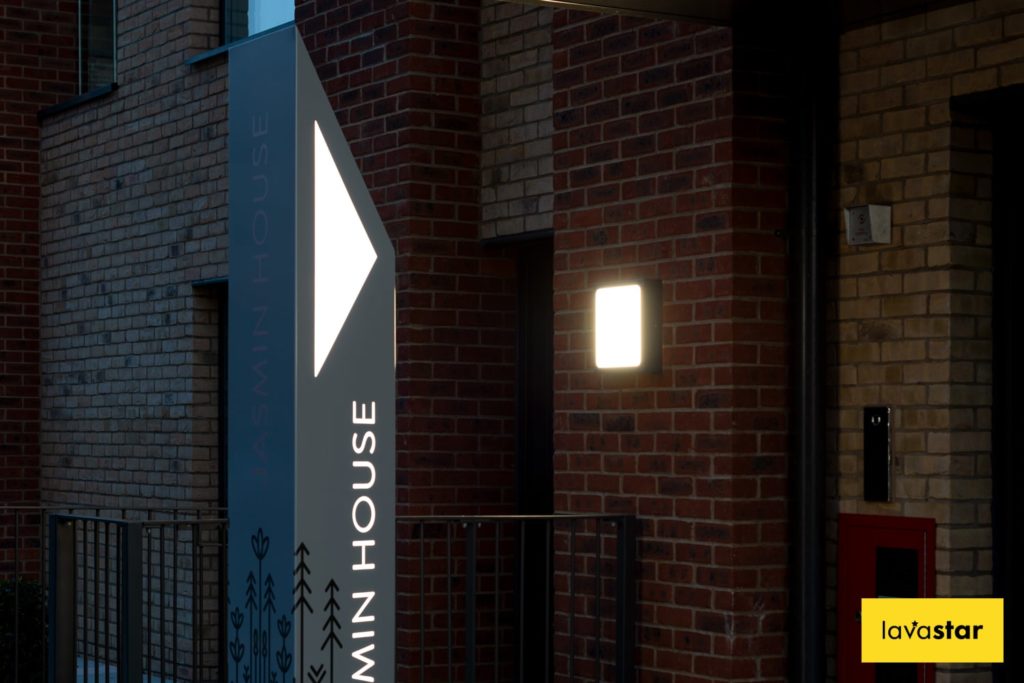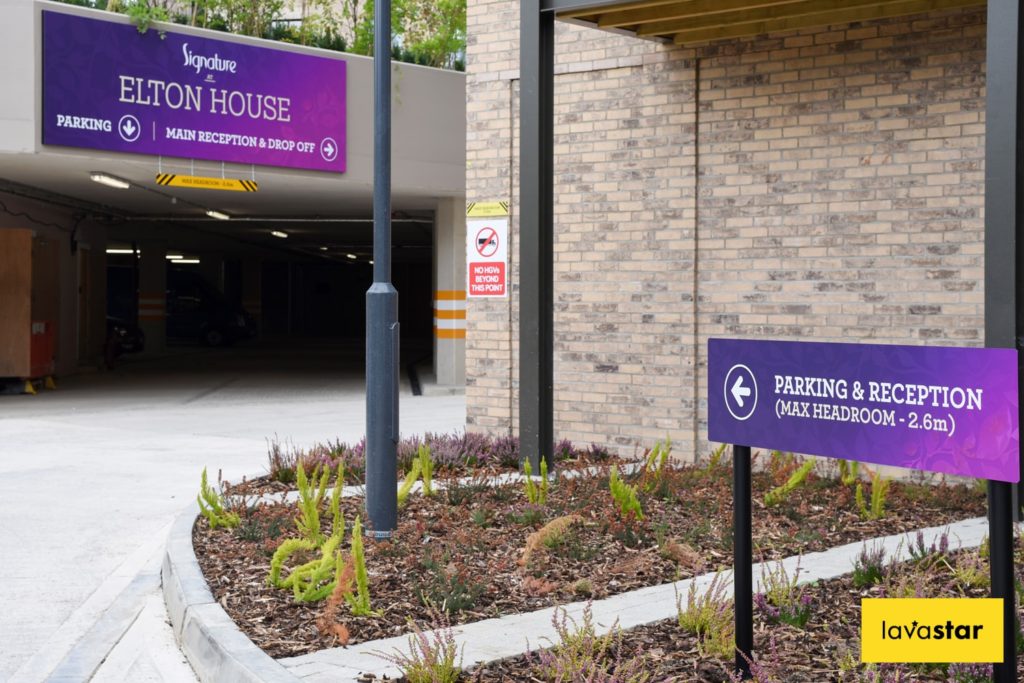Directional signage isn’t just about getting from A to B
Like many people in the modern day, I often find myself wondering:
Where am I?
How did I get here?
How do I get where I need to go?
Sadly, there are no easy answers to these questions on an existential level, but for the day-to-day, there’s directional signage.
What is directional signage?
You’ll know this kind of sign when you see it – they’re the kind of universally comprehensible pictograms that help us navigate spaces all over the world. Whether they’re placed on the interior or exterior of a property, the purpose of directional (often referred to as ‘wayfaring’ or ‘wayfinding’) signs is a little bit Ronseal – they exist to direct you to where you need to go. As a result, these signs are often very simple, easy to understand and will (generally) carry minimal text, allowing people of all nationalities to understand them.
What makes for good directional signage?
As above, the main purpose of directional signage is to be understood, and that should remain at the heart of any design process. While there’s no requirement for standardisation in appearance, there are expectations that we develop through our everyday interactions with various kinds of directional signage (on roads, in other buildings etc.), so it pays to keep things simple.
That being said, there’s no harm in playing with colour and presentation – in materials, shape and appearance to make sure that your directional signage remains in keeping with how your business presents itself everywhere else. There is also a lot that can be done with directional signage that encourages inclusivity – such as the addition of braille, audio or (where appropriate) text translations.

Why directional signage is about more than A to B
Paul Rand, an American graphic designer (responsible for the logos of, amongst many other huge brands, ABC, UPS and IBM) once said “everything is design”. The entire built environment is designed to convey subtle, often subconscious messaging about where we are and what we’re allowed to do.
As people, we develop an unspoken understanding about all manner of ‘design’ fundamentals – the curves and thicknesses of lines, the style of fonts – and this understanding will contribute to how we feel about a place.
- Colour psychology: – there have been many millions spent on researching the psychological impact of colour, so thankfully you don’t have to spend it yourself. That research has found that reds create feelings of urgency, greens are equated to well-being while blue is calming. Consider the purpose of your signs and how you want people to feel around them.
- Typography: – whether you realise it or not, you will have associations and feelings connected to certain types of typography, whether that’s serifed or sans-serif fonts, the space between the letters (kerning) or even the thickness of a line, they all communicate different things about the environment you’re in and can add layers to the meaning of your text.
- Clarity: – we’ve emphasised the importance of clarity throughout, and it’s important just on a functional level for signs to be clear. However, clarity can also have a calming influence, and letting people know where they are and facilitating ease of navigation can reduce stress.
- Inclusion: – this is another overlooked aspect of signage, it’s one of the most inclusive things in the world, but you can make people feel even more at home by helping underserved minorities to better navigate your building.
Directional signage is often looked at from a totally utilitarian perspective, but it can also serve to convey important messages – about who you are, who you’re there to serve, and how you intend to do it. In short – it’s about more than just getting people from A to B.

Lavastar’s Directional Signage
Since 2015, Lavastar has become one of the UKs most reputable suppliers of signs and graphics. We take enormous pride in offering an end-to-end service and have assembled skilled teams of designers, manufacturers, and installers across that can help us take you all the way from conception to installation.
Our commitment extends beyond meeting the four primary requirements for signage, however, and we will do our best to reinforce your brand identity with your signage. We’re a team you can rely on.
To find out more about our custom directional signage, you can contact our team on 020 3281 7395 or info@lavastar.co.uk.






